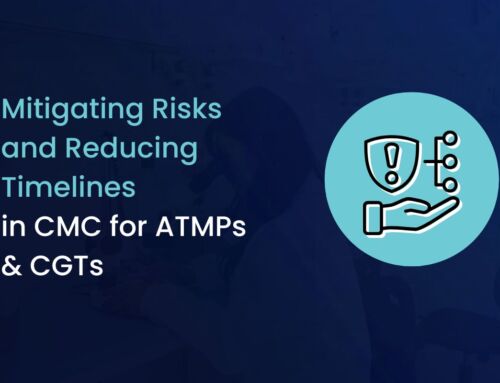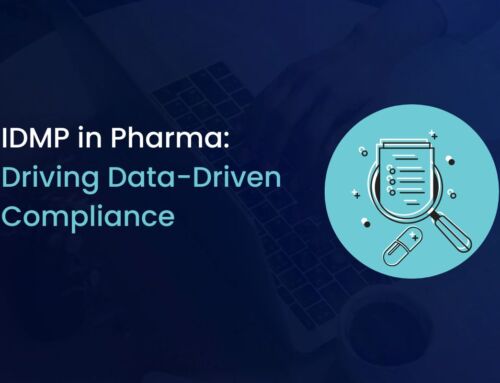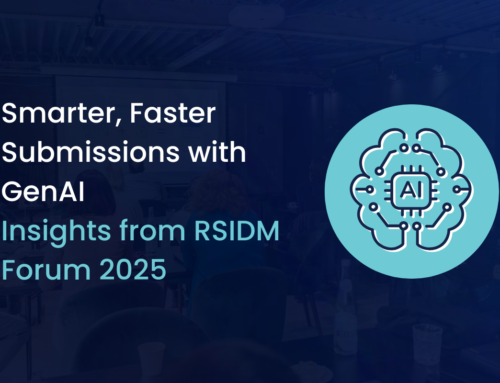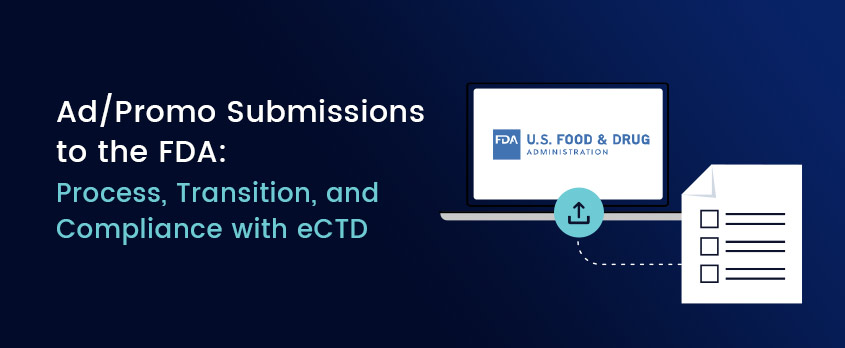
Understanding Ad/Promo Submissions to the FDA: Process, Transition, and Compliance with eCTD
What are Ad/Promo Submissions?
The promotional labeling and advertising materials, together known as promotional materials for human prescription drug products, are to be submitted to the FDA (Food and Drug Administration) once the drug product has been approved by the FDA. These submissions are processed on a 2253 form, which is the Transmittal of Advertisements and Promotional Labeling for Drugs and Biologics for Human Use. Form 2253 is required for approved new drug applications (NDAs), Abbreviated New Drug Application (ANDAs), Biologic Licensing Applications (BLAs), and the submissions are made to the Office of Prescription Drug Promotion (OPDP) in the Center for Drug Evaluation and Research (CDER). These submissions are essential for every pharmaceutical company as it aids in marketing their pharmaceutical drug products approved by the FDA.
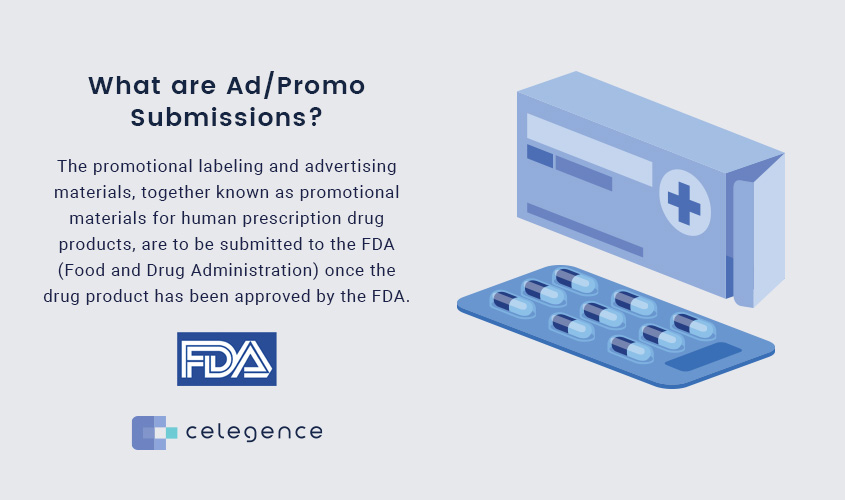
Promotional Labeling for Pharmaceuticals
Promotional labeling is different than the FDA regulatory labeling requirements and focuses on promoting drug products. There are various types of promotional materials that include videos, websites, telephone communications, print ads, television ads, social media ads, and much more.
The FDA currently receives various types of advertising and promotional submissions either in eCTD format that includes Form FDA 2253 submissions, Pre-submission of promotional materials for Accelerated Approval Products (Subpart H and E), promotional materials for Advisory comments, Resubmissions, General correspondence, Amendments, Withdrawal requests, Response to warning letters, Response to Information requests, Reference documents, and Complaints.
How are Ad/Promo Submissions Completed?
eCTD Submissions are submitted electronically using publishing tools. The instructions for processing form 2253 can be accessed here.
eCTD Submissions: Electronic submissions can be submitted using the FDA’s recommended publishing tools. The most common types of submissions include Form FDA 2253 and pre-submission for accelerated approval products. The submissions are built according to the specifications of the eCTD guidance document. As soon as the submission is ready, the files are pulled on to the respective eCTD structure on the publishing tool from the document management system where the entire submission is processed, QC’d, compiled, validated, and published via the Electronic Submissions Gateway (ESG).
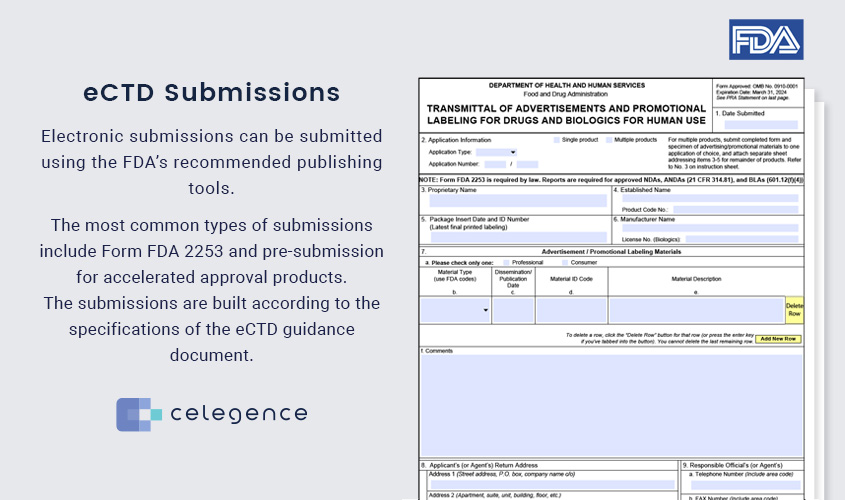
Are eCTD Submissions Better?
Yes, eCTD submissions seem to be far better than the previous non-eCTD submissions. The transitioning from manual to electronic versions of processing submissions is currently saving a lot of time and energy. Electronic submissions are helping lower the administrative costs, paper wastage, and increasing productivity. As this process is automated, reviews became easier, space is saved (especially for paper dossiers which are lengthy), and errors are minimized. It is also useful for quick navigation through the documents and improves the entire life cycle management.
Advantages & Disadvantages of eCTD Submissions
All the submission components are electronic versions of submission materials – possible chance of error using an incorrect electronic version of the submission.
Submission metadata and promotional material metadata must be filled with respect to the 2253 form in order to compile a submission/sequence – possible chance of entering incorrect metadata for submission.
The compiled submission must be validated against the eCTD validation tool to avoid any significant errors – any significant errors not caught in QC might lead to technical rejection of the submission when submitted via the ESG (Electronic Submissions Gateway).
The submission must be QC’d as per electronic standards of the FDA against the company-specific checklist – expensive for smaller companies to buy and maintain eCTD systems for Ad/Promo operations.
The process is eco-friendly – more work is required for companies that have a high volume of Ad/Promo submissions.
- Submission compilation and QC must be performed by experts experienced in eCTD systems and FDA OPDP regulations.
- A large budget should be allocated to Ad/Promo operations when compared to paper/CD submissions.
- Dedicated IT professionals are required to support and maintain eCTD systems.
The FDA is phasing out non-eCTD submissions in favor of digital methods to reduce environmental impact. Companies are encouraged to transition to eCTD formats as soon as possible.
Mandatory Transition of Ad/Promo Submissions Since June 2021
The faster you can adapt to the new technology, the quicker your organization will experience boosts in productivity and process efficiency. Before implementing eCTD submissions, various scenarios must be discussed regarding publishing submissions for Ad/Promo. Building test submissions plays a crucial role in identifying errors and other issues. The tool’s validation report helps to identify the errors, address the challenges, and resolve them quickly. All companies are currently adding Ad/Promo operations to their existing regulatory operations team, or they are outsourcing it to regulatory publishing CROs.
The FDA has reported that companies using eCTD submissions have experienced a 30% reduction in review times and a significant decrease in administrative errors. This transition is also part of a broader initiative to enhance digital regulatory frameworks.
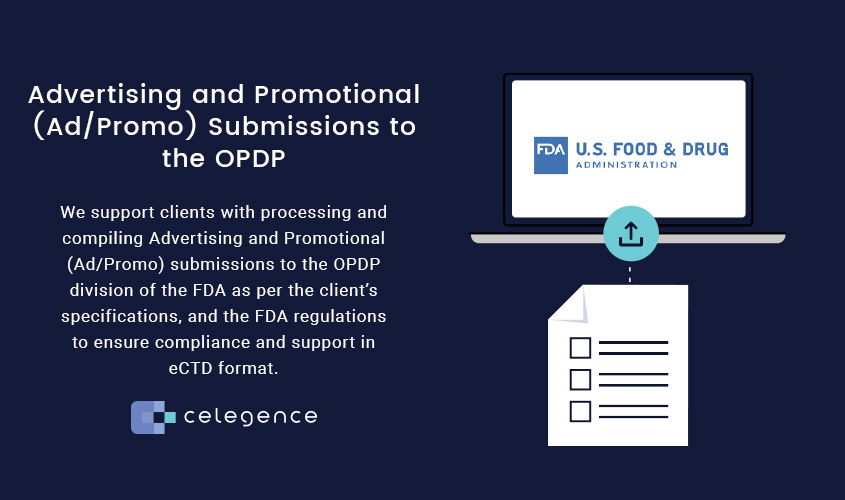
Advertising and Promotional (Ad/Promo) Submissions to the OPDP
Celegence is a provider of services and solutions to support the Life Sciences industry with regulatory affairs operations and strategy. Celegence supports clients with processing and compiling Advertising and Promotional (Ad/Promo) submissions to the OPDP division of the FDA as per the client’s specifications, and the FDA regulations to ensure compliance and support in eCTD format. We also offer end-to-end Ad/Promo submission management and an established business processes for Ad/Promo operations.
About The Author

Naga Srilekha Somu is a Regulatory Affairs Specialist with expertise in promotional material submissions for pharmaceutical prescription drug products. Her expertise lies in navigating complex compliance issues associated with the marketing of pharmaceutical prescription drug products. She ensures regulatory compliance by submitting Form 2253 submissions to OPDP and promotes process improvements in regulatory operations. She works with Marketing and Commercial teams to distribute compliance promotional materials to healthcare professionals and patients across the United States. Experienced with tools like docuBridge and Veeva Vault PromoMats.
